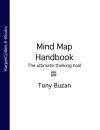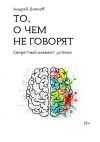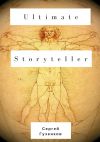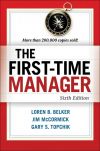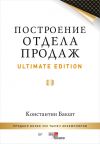Правообладателям!
Представленный фрагмент книги размещен по согласованию с распространителем легального контента ООО "ЛитРес" (не более 20% исходного текста). Если вы считаете, что размещение материала нарушает ваши или чьи-либо права, то сообщите нам об этом.Читателям!
Оплатили, но не знаете что делать дальше?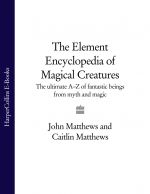
Текст бизнес-книги "The Element Encyclopedia of Magical Creatures: The Ultimate A–Z of Fantastic Beings from Myth and Magic"
Автор книги: John Matthews
Раздел: Жанр неизвестен
Текущая страница: 7 (всего у книги 7 страниц)
ATTERCROPPE
A curious and malicious fairy creature from Saxon folklore. Its name means ‘Little Poison Head’, and it resembles a small snake with human arms and legs.
ATUA
A name for elemental spirits in the folklore of the Maori people of New Zealand. They inhabit the bodies of other monstrous creatures, such as the Aria or, on occasion, animals such as the gecko. They are extremely venomous. The Atua have many different names and attributes, among which are the Mokotiti, who cause diseases of the lungs; the Korokiorwek, who cause birth defects; the Tarakiki, who inflict swelling to the ankles and toes; the Makawe, whose favourite trick is to drive people into hot pools where they are scalded; and the Titihal, who cause pains in the feet.
They are also known among the Polynesian tribes where they are called Nukir Mai Tore or ‘People of the Otherworld’. Here they have a less fearsome aspect and are akin to Western fairies. They live in the trees and, though shy and reclusive, are known occasionally to marry human beings. It is not permitted to mention their real names and any one who discovers such a name will find their tongue afflicted with paralysis to prevent them from speaking.
ATUNKAI
A strange creature from the folklore of the Native American people of Oregon, Atunkai is said to resemble a gigantic beaver, though it is believed at one time to have been a bear which fell into one of the Wells of Ahuluk. These wells, which contained a number of great water serpents, are said to have the power of transforming anything that falls into them into a monstrous shape.
AUDUMLA
The primeval cow in Norse and Teutonic mythology, who was created out of the melting of the primeval hoarfrost in the vast darkness of Niflheim, the ancient Underworld. Her name means the ‘Horned Cow with Plenty of Milk’. Great streams flowed from her udders and fed the giant Ymir, whose body was later used to form the Earth, while at the same time Audumla licked Buri, the progenitor of the gods, free from the salty ice.
AUFHOCKER
A gigantic demon dog in the folklore of Germany. The name Aufhocker may be translated as ‘Leap Upon’ – and the creature is often seen to do this to its victims. Once it has leapt upon the back of its prey, it grows heavier and heavier until the person is virtually crushed to death. At other times, it will come upon an unwary traveller and walk for a time by his side, then suddenly rise up upon its hind legs until it is tall enough to tear out his throat. These characteristics are similar to that of the Black Dog in British folklore and the Kludde in Belgian tradition.
Though generally portrayed as a dog, the Aufhocker may occasionally appear as a wild black horse, which invites weary travellers to ride on its back. Once mounted, they find that they cannot dismount, while the horse gallops faster and faster, usually ending by throwing them from its back into deep water or swamp. It thus resembles the Kelpie or water horse of Scottish folk tradition. The Aufhocker almost always attacks at night, and it is believed that if its victims can survive until morning they may get free.
AUNYAINA
According to the Pare natives of Brazil, the Aunyaina was an enormous humanoid creature with tusks projecting from its face like those of a wild boar. It hunted humans for its food and chased anyone foolish enough to wander into the forest. Once it had caught them, it ripped them to pieces with its tusks and consumed them entirely, crunching their bones.
One day, some children who were being chased by the Aunyaina climbed into the trees to escape. The children began to swing from tree to tree on the vines which grew there, but the Aunyaina still followed them. Seeing their plight, a parrot flew into the tree and bit through the vine, causing the monster to crash to the ground. From its broken body came the reptiles and lizards which now inhabit the Earth. The children were too afraid to come down from the tree, and eventually became the monkeys which live there to this day.
AURGELMIR
Another name for Ymir, the primordial giant of Norse mythology.
AVAGRAH
In Burmese mythology, Avagrah is one of the names of a great Nyan or Graha, a giant serpent.
AXEHANDLE HOUND
One of a number of bizarre creatures from the folklore and tall tales of American lumberjacks. The Axehandle Hound is one of a group of beings, often called Fearsome Critters, which originated in the minds of men enduring the isolation and wildness of the landscape around Wisconsin and Minnesota during the 19th century. The Axehandle Hound is described as having a long thin body in the shape of an axe handle with small squat legs, and a head resembling the head of an axe. It is said to consume the handles of any axes left unattended!
AYIDA
An alternative name for the great Rainbow Serpent in the folklore of the people of Haiti in the Caribbean. Also known as Aida Hwedo, among the people of Benin in Africa. He is the partner of the Vodun cosmic serpent, Damballah, god of rivers and springs.
AZEMAN
A type of vampire described by the people of Surinam on the north coast of South America. The Azeman is in fact a female, who every night dresses herself in the skin of an animal, and travels around the villages and through the forests attacking and killing anyone she encounters. As with many such creatures, there are ways of defeating or capturing her. In this case, she may be prevented from entering your home by the simple method of placing a broom across the doorstep. Another way of defeating the Azeman is to lay several brooms on the floor of your house – for some reason the Azeman becomes obsessed with counting every bristle in each of the brooms, and is often caught when the sun rises, still counting, and turns to ash. A third way of defeating her is by, during the day, finding the dried animal skin in which she dresses, and sprinkling pepper over it. This makes it impossible for the Azeman to don her cloak of power, and she eventually starves from lack of sustenance.
AZI DAHAKA
The name of a great cosmic serpent or dragon in the Zoroastrian mythology of ancient Persia. Originally, its name was translated as ‘snake’; however, the modern translation in the Farsi language is ‘dragon’. Ultimately, the Azi Dahaka seems to combine something of each of these beings, being portrayed as a winged dragon-snake with three heads, said to represent pain, anguish and death respectively. Each head has six eyes and three pairs of fangs, and the wings of the Azi Dahaka are so huge that when spread they blot out the sun. The great Zoroastrian mystical text Shanamah describes the Azi Dahaka as roughly human in shape save for the two serpents growing out of its neck. Zoroastrian mythology describes the creature as the son of a female demon or as the descendant of Angra Mainu, the original spirit of evil. The myths also say that Azu Dahaka began by eating only cattle, but soon acquired a taste for human flesh. He conspired to overthrow the first human being, Yima, and as a punishment for this, was chained under Mount Demavand by the hero Atta. This is not the end of the story, however, as it is said that at the end of time Azu Dahaka will break free and destroy the greater part of humanity, until itself being defeated by the god Keresaspa. Azu Dahaka is a kind of destroying monster, not unlike the Norse wolf Fenris.
AZ-I-WU-GUM-KI-MUKH-TI
A bizarre and frightening monster from the traditions of the Inuit people of Greenland. It resembled a giant walrus with the head of a dog, dog’s legs, gleaming black scales, and a huge fish’s tail. One blow from this tail could dispatch a human being, and the Az-I-Wu-Gum-Ki-Mukh-Ti was much feared among the Inuit. The 19th-century explorer E.W. Nelson heard much of this creature from the native people and dubbed it the ‘Walrus-Dog’; however, he does not appear to have seen one himself.
AZIZA
Small nature spirits in the folklore of the Dahomey people of West Africa, the Aziza live in the depths of the forest and are very shy, but the Dahomey have encountered them many times and learned from them. They are considered as luck-bringers and as such are frequently invoked by the native people.
Внимание! Это ознакомительный фрагмент книги.
Если начало книги вам понравилось, то полную версию можно приобрести у нашего партнёра - распространителя легального контента ООО "ЛитРес".Правообладателям!
Представленный фрагмент книги размещен по согласованию с распространителем легального контента ООО "ЛитРес" (не более 20% исходного текста). Если вы считаете, что размещение материала нарушает ваши или чьи-либо права, то сообщите нам об этом.Читателям!
Оплатили, но не знаете что делать дальше?